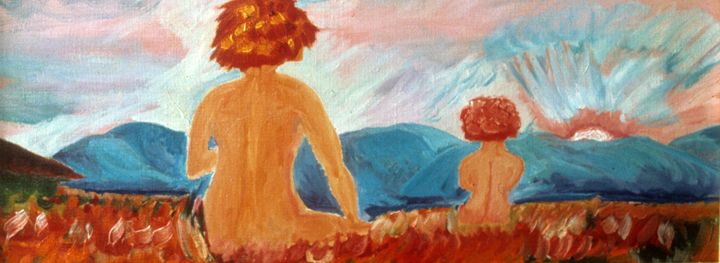Art & Art History
Wilhelm Reich

Gallery 400
400 South Peoria Street, Chicago, IL 60607
Wilhelm Reich, an exhibition of works by the self-taught painter better known for his psychiatric and scientific theories, marks the first time that Reich’s work had ever been exhibited outside of the Wilhelm Reich Museum in Rangeley, Maine. Once a member of Sigmund Freud’s inner circle in Vienna, Reich fled the Nazis and came to the United States in 1939. He was prosecuted by the federal Food and Drug Administration for his controversial theories regarding a form of energy he termed “orgone.” He died in prison in 1957.
Born in 1897, Wilhelm Reich would likely be classified as a naive painter and a self-taught artist. The notion of “Sunday painter” often carries pejorative overtones, but Reich pursued his “hobby” with a dedication that more than compensated for his lack of formal art training. Reich realized that the concept, or rather the thought and the feeling that go into the creative process, was more important than stylish production. Through painting, Reich was able to explore and express his interest in the wonder of orgone energy on a direct, visual level. He noted in his journal on Feb. 8, 1951
“Eyes and hand, especially fingers, unite, and ‘it forms’ from them while I paint. Somehow, memories of landscapes seen and traveled through long ago are still alive with a special sharpness. These images emerge with the formation of shape and harmonic integration of color. I am, of course, no learned artist, but feel I can do it …. Painting of orgone phenomena will, if I acquire the technical skill, save me a lot of writing.”
While still a medical student at the University of Vienna, Reich became a member of the newly formed Vienna Psychoanalytic Society and was one of the younger and more active members of Sigmund Freud’s inner circle. Reich believed that societal repression of the sexual drive was the cause of neurosis and that preventing neurosis involved the restructuring of society. Freud, who placed the origin of neurosis in sexual suppression, believed that a certain amount of repression was necessary for a “civilized” culture. Reich and Freud differed in their views on how the societal implication of Freud’s original clinical discoveries should be implemented. During this same time, Hitler assumed power. The turbulent political atmosphere of prewar Europe intensified, and Reich was forced to flee Germany in 1933.
Reich’s daughter, Eva, gave him paints and brushes for Christmas in 1950, and soon after he began to paint. He had completed 45 canvases and one sculpture at the time of his death. While it might be convenient to characterize these paintings as naive, Reich himself was one of the world’s most creative and original thinkers in both the psychiatric and physical science fields. Although many of these canvases are small, Reich’s dramatic use of bright color and expressionistic brushwork produce forceful images. Some of his paintings reflect his knowledge of “man’s inhumanity to man,” while many illustrate his love of the unifying processes of nature. In 1950 he wrote in his journal,